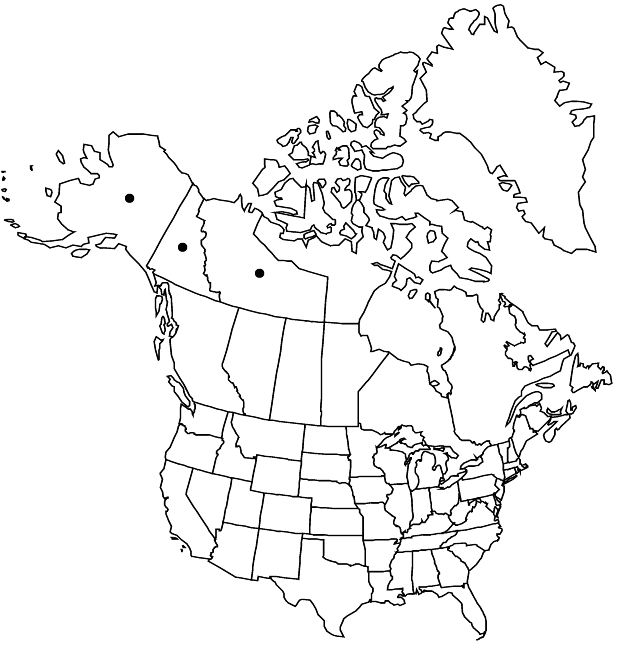Primula pumila
Bot. Jahrb. Syst. 10: 208. 1888 ,.
Plants 2–40 cm, herbaceous; rhizomes short, thick; rosettes sometimes clumped; vegetative parts farinose at least when young. Leaves not aromatic, indistinctly petiolate; petiole winged; blade without deep reticulate veins abaxially, broadly lanceolate, 4–6 × 0.7–3 cm, fleshy, margins entire or slightly serrate, apex acute to obtuse, surfaces glabrous. Inflorescences 3–20-flowered; involucral bracts plane, ± equal. Pedicels loosely erect to slightly nodding, somewhat thick, 3–30 mm, length 1–3 times bracts, flexuous. Flowers homostylous; calyx green or greenish black, campanulate, 5–7 mm; corolla rose-magenta, tube 5–7 mm, length 2 times calyx, eglandular, limb 10–20 mm diam., lobes 5–10 mm, apex unlobed to slightly emarginate. Capsules broadly cylindric, length 2–3 times calyx. Seeds without flanged edges, vesiculate. 2n = 22.
Phenology: Flowering summer.
Habitat: Moist tundra slopes, solifluction terraces, late snowbeds
Elevation: 0-500 m
Distribution

N.W.T., Yukon, Alaska, e Asia (Russian Far East).
Discussion
Primula pumila is usually a robust, stocky plant but varies in height, number of flowers, and leaf shape. At least some of this variability can be attributed to phenotypic plasticity in response to ecological factors; in rare instances when P. pumila grows in sympatry with P. tschuktschorum, some hybridization appears to occur (M. L. Carlson et al. 2008) and may contribute to morphological variation. Primula pumila often begins flowering when ascapose; the scape continues to elongate throughout anthesis. Young flowers can be herkogamous (with spatial separation of anthers and stigma) appearing almost distylous when the style protrudes from the corolla throat; tube elongation during flower maturation results in typical homostylous proximity of anthers and style when flowers are at full anthesis. Young plants are always white-farinose, unlike those of P. tschuktschorum, which are consistently efarinose. The farina can disappear with age leaving only remnants on the calyx. Nutrient-rich sites near bird perches or mammal colonies produce unusually robust individuals in both P. tschuktschorum and P. pumila; this is particularly apparent in specimens from the Bering Sea islands where abundant bird colonies and marine mammals contribute to fertile soils and the robust nature of many plants, a feature of the islands described by a number of early botanical visitors to the islands. Similarly, individuals from nutrient-poor or exposed alpine sites tend to be depauperate and may approximate the diminutive stature and reduced inflorescences of P. tschuktschorum.
Other minor morphological variations can be seen in leaf shape and dentation. Individuals of Primula pumila from southwestern Alaska have more broadly obtuse leaves with serrate margins, and plants from interior Alaska and Canada tend to have more acute lanceolate leaves. These differences are not strong enough to justify taxonomic recognition. Regardless of stature or leaf morphology, P. tschukstchorum and P. pumila can be reliably distinguished by the heterostylous and homostylous flowers, respectively.
Primula pumila has been treated previously as P. eximia. The inappropriate but earlier epithet pumila (“dwarf,” the antithesis of the usual habit of this species) has priority under the International Code of Botanical Nomenclature. Ledebour first applied it to a dwarf, homostylous collection of the species that Chamisso made at Saint Lawrence Bay, Alaska.
Primula arctica Koidzumi, based on a 1907 collection by Yokoyama from Port Providence, Chukotka, also refers to material of P. pumila. The earlier name P. arctica (Chamisso & Schlechtendal) Kuntze was based on Androsace arctica, now Douglasia ochotensis.
Selected References
None.